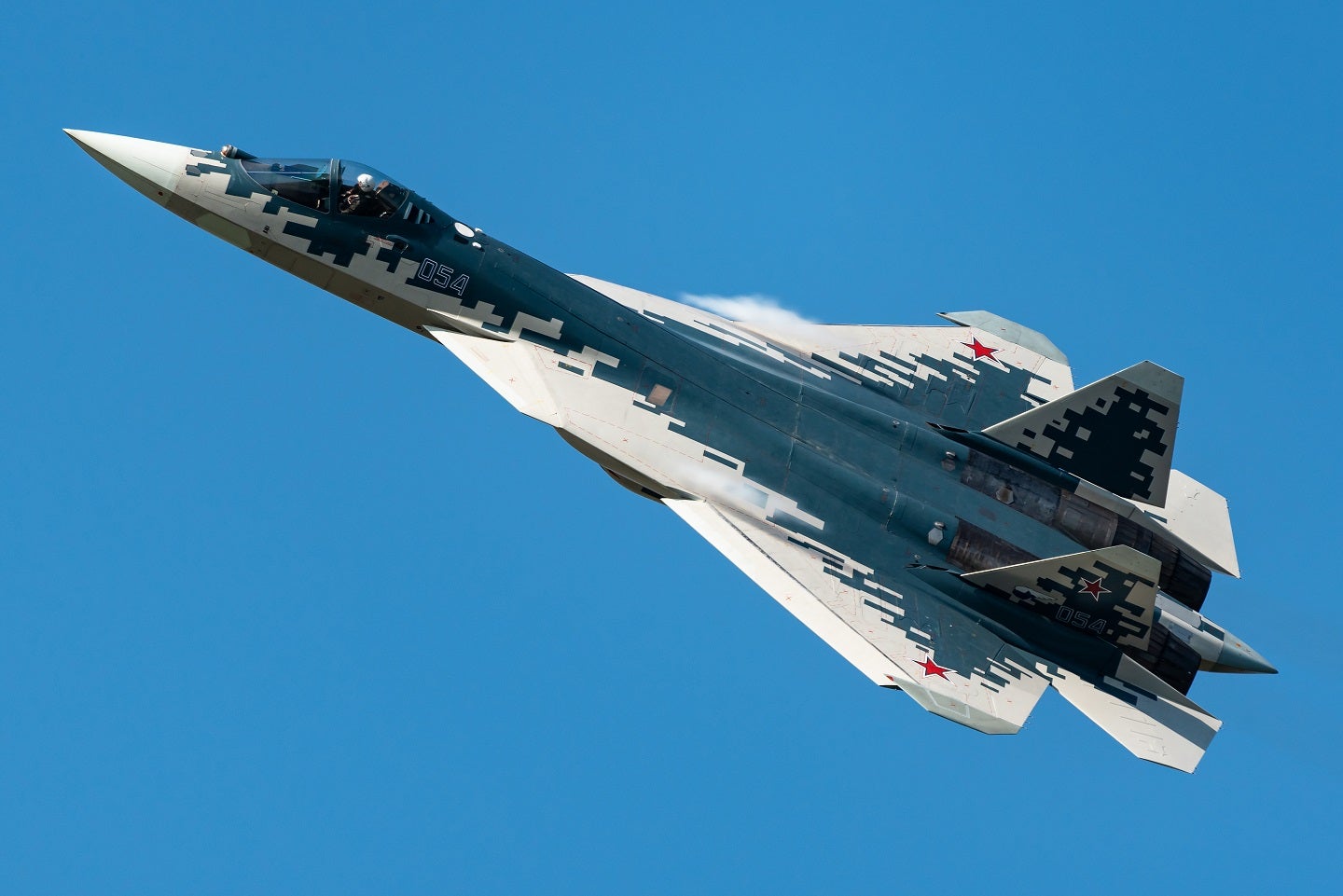
Artificial intelligence (AI) has become an integral feature of defence systems, and the Russian defence conglomerate Rostec has developed an AI-powered communication suite for fifth-generation combat aircraft, specifically for the Sukhoi Su-57 stealth fighter.
The communications complex was developed by the specialists of NPP Polet of the Ruselectronics holding (which resides within the Rostec State Corporation), and it operates in the high and very high frequency ranges.
The equipment ensures the reliability of information transmission due to noise-immune coding, interleaving of symbols in the message, common time synchronisation in signal processing, the possibility of simultaneous transmission of messages over parallel channels, increasing the range of stable communication, as well as the use of AI technologies.
Director general of NPP Pollet said: “The solution of many functional tasks that increase the efficiency of aviation operations is carried out with the help of on-board digital communication systems.
“At present, these complexes are widely used for the exchange of messages between aircraft avionics and ground services. Our new complex is an initiative development and is planned for implementation as part of the S-111 communications complex.”
The S-111 communications system caters for the Sukhoi Su-57 fifth-generation stealth aircraft, which was inducted into the Russian Air Force in 2022. In the same year, Russia employed the Su-57 in special military operations against Ukraine, for launching long-range air-to-surface or air-to-air missiles into Ukraine.
How well do you really know your competitors?
Access the most comprehensive Company Profiles on the market, powered by GlobalData. Save hours of research. Gain competitive edge.

Thank you!
Your download email will arrive shortly
Not ready to buy yet? Download a free sample
We are confident about the unique quality of our Company Profiles. However, we want you to make the most beneficial decision for your business, so we offer a free sample that you can download by submitting the below form
By GlobalDataAs it stands, the Russian Air Force is expected to receive 22 Su-57 fighter jets by late 2024, which is expected to increase to 76 by 2028 according to intellligence from GlobalData.
The Russian Su-57 and Nato’s F-35
Compared to the standard Nato multirole combat aircraft, the F-35 Lightning II, the Su-57 – adapted with Rostec’s new AI communications suite – will pose a credible threat.
The F-35 undergoes a perpetual sustainment programme under the Joint Strike Fighter programme, and a critical feature in this development is its communication system. The original equipment manufacturer, Lockheed Martin, uses the F-35 NextGen Open Mission services. GlobalData says that an open, cloud-based system such as this allows sensors, services and agencies to interconnect, giving forces the necessary superiority to overwhelm enemies that lag behind in such force multipliers.
However, a system that integrates AI will give a pilot quicker response times and decision-making in the air. As well as this, cloud-based systems are infamously more susceptible to cyber attacks. The leading intelligence firm, GlobalData, also tells us that the US Air Force has reached out to C3.ai, an American firm that provides a platform for enterprise AI, which testifies to the defence market attraction to this important theme.
This provides the Su-57 with some advantage compared to the increasingly standardised Nato fighter jet. This AI-intergated communication system will pose a serious threat to the already dwindling Ukrainian air defence systems, which the US and its allies will contiue to support as the war continues.
Industrial sustainment
As Russia becomes embroiled in a war of attrition, which has made the country an outlier in international trade, sourcing AI technologies for its communications would be next to impossible, let alone sustaining these needs from within Russia.
The only place that Russia could source semi-conductors – an important component of AI technologies – is from its neighbour and ally, Belarus, which cannot sustain the country’s demand for AI technologies alone.
While an AI-powered communication system for Russian combat aircraft would provide a much-needed edge in the battlespace, Russia’s current isolation and trade restrictions reduces Rostec’s AI application to impotence.







